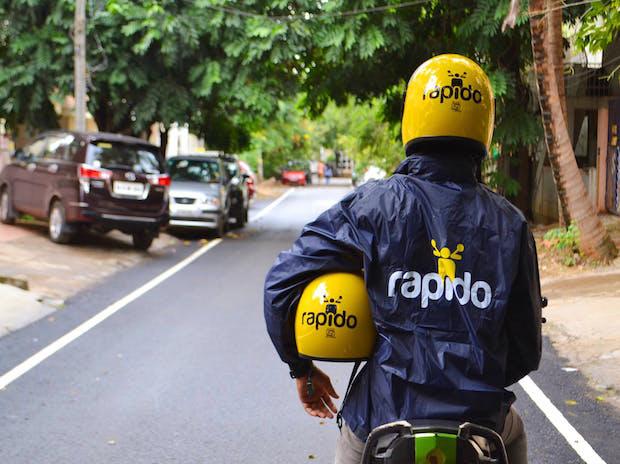Bike-taxi service provider Rapido drives cabs into Uber, Ola lane
There’s a hint of new competition riding into a sector that has attracted attention for being in a duopoly-like situation. Rapido, a commute app known for its budget-friendly bike-taxi services, on Tuesday announced its entry into the cab market, which is currently dominated by marquee brands Uber and Ola. Rapido’s cab foray will be enabled by a software as a service (SaaS)-based platform. While BluSmart and InDrive are among the other names in the cab aggregator space, they are yet to have a pan-India reach.
Bengaluru-based Rapido, which was founded in 2015, is yet to enter the unicorn club. At a valuation of around $820 million (Rs 6,800 crore at the current conversion rate), it has raised approximately $324 million (Rs 2,600 crore) in funding, according to leading startup data platform Tracxn. TVS, Swiggy, Nexus Venture Partners, and WestBridge Capital are among its investors.
Incidentally, Rapido has a Bengaluru connect with both Uber and Ola. San Francisco-headquartered Uber, when it launched in India in 2013, offered the first ride in Bengaluru. And, Bhavish Aggarwal and Ankit Bhati had founded Ola in 2010 with its headquarters in Bengaluru.
Rapido already provides bike taxis and auto (three-wheeler) services and is now getting into cars with its zero-commission model for drivers. The Rapido Cabs platform plans to onboard driver partnersthrough a subscription model instead of levying commission on each ride—a model that the incumbents follow. Drivers on the Rapido platform will be required to pay a subscription fee of Rs 500 if their monthly earnings exceed Rs 10,000.
“Our innovative SaaS-based platform revolutionises the conventional commission system for drivers, tackling the persistent challenge of commission sharing with aggregators,’’ Pavan Guntupalli, co-founder of Rapido, said during a launch event in Gurugram on Tuesday. He explained that this approach ensures that drivers incur only a minimal software usage fee, marking a shift in the industry dynamics. The company expects its cabs division to contribute 15 to 20 per cent to its revenue in the coming year. “We aim to have 500,000 driver partners by Q3FY25,” he said.
As for the financials, the firm’s losses rose to Rs 439 crore in FY22 from Rs 166 crore the previous year, according to Entrackr. Its revenues almost doubled from Rs 75 crore to Rs 145 crore in the same period. Uber India decreased its losses to Rs 216 crore in FY22 from Rs 334 crore in the preceding financial year. Ola reported a consolidated loss of Rs 1,522 crore, up from Rs 1,116 crore in the comparable period. The financial earnings for FY23 have not been disclosed yet.
Uber and Ola didn’t comment on the queries related to competition sent by this newspaper. However, industry sources said that Rapido may face various challenges as a small player and alleged that it is largely not licensed even in the two-wheeler space. “Competing with players such as Uber, Ola, BluSmart and inDrive would be tough,” said an industry executive, who wished to remain anonymous.
Rapido has engaged over 100,000 four-wheelers on its fleet, with nearly 50 per cent located in Delhi-NCR. While Rapido is accessible in over 100 cities, its cab service will debut in Bengaluru, Hyderabad, and Delhi-NCR. Guntupalli is confident of launching in all major cities next year.
The company is prioritising passenger safety with app features like SoS, share-location and emergency buttons. In addition, it has provision to send notifications in case the driver deviates from the route, makes halts, or drops off at a location different from the booked one. The company also plans to develop a face recognition system for future integration. Sensitivity training for becoming driver partners, referred to as captains, is part of the safety drill too.
To focus on sustainable transportation, Rapido has begun including electric vehicles (EV) in its fleets. “We are collaborating with the government to comprehend the barriers hindering electrification. This includes assessing factors such as costs, charging infrastructure and financing,” Guntupalli said.
